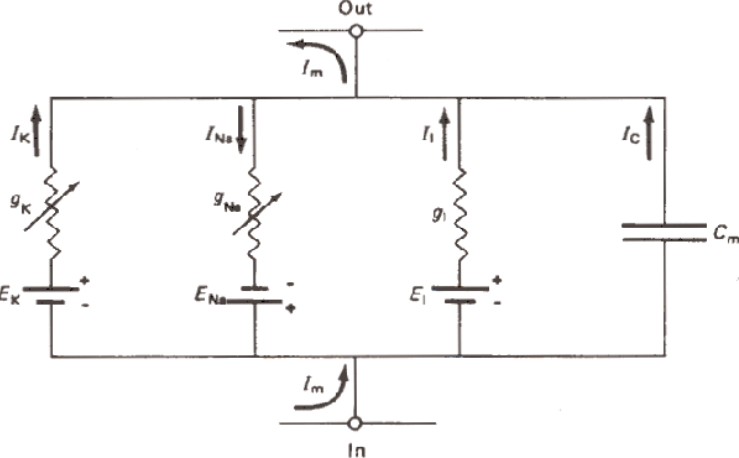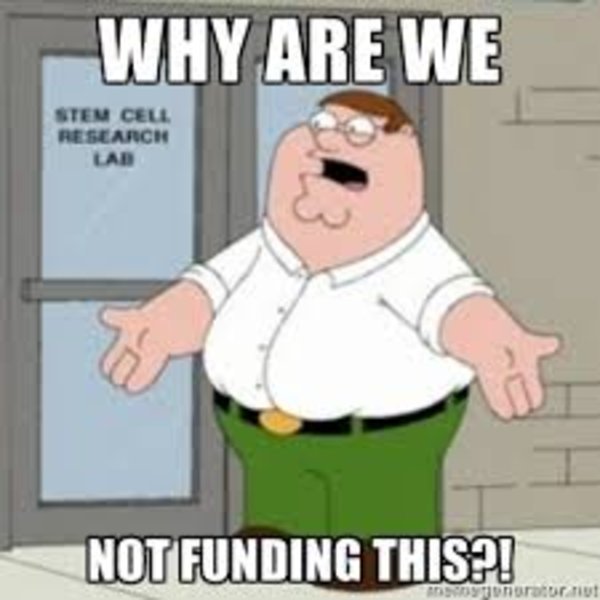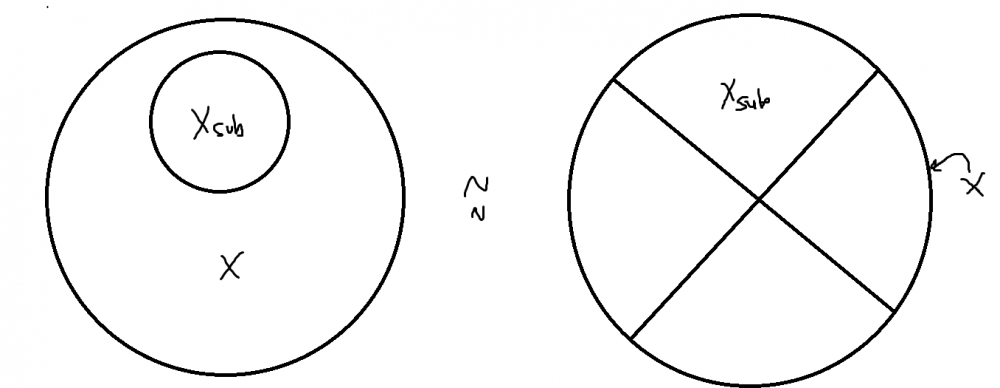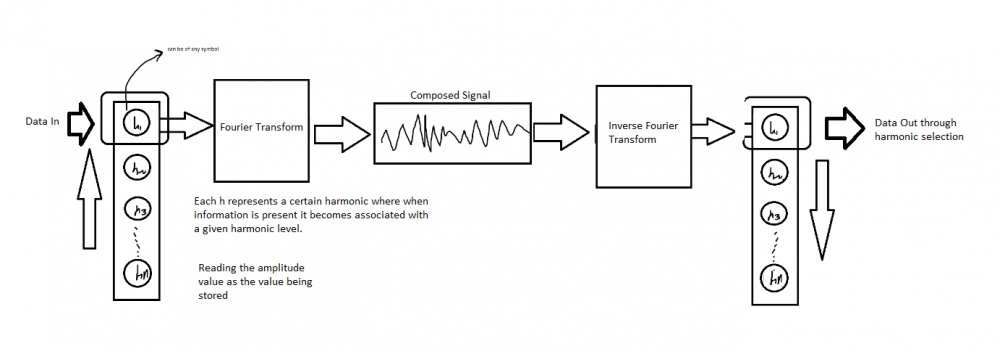-
Posts
398 -
Joined
-
Last visited
-
Days Won
1
Content Type
Profiles
Forums
Events
Posts posted by ALine
-
-
On 1/30/2020 at 6:54 AM, Dagl1 said:
ope this helps, at least a little;p
Ye! helps out a whooooole lot. If I were to give a general reference understanding to this I would call it a kind of "spark gap" which requires a certain amount of "charge" in order to "fire." This previous statement is used in order to give myself an understanding of what behaviors it associates to also seen.
0 -
I have been trying to simulate a neuron for a self project to improve on my skills as a circuit designer, however I am having trouble understanding the circuit for a neuron.
below is the circuit model

The way I am interpreting it is the 2 variable resistors are actually potentiometers and the are, I think, self regulating or tuned by a user and the input and output currents are the overall neurons models input and outputs. However what I do not understand is how this leads to the neuron actually firing.
Much help would be appreciated.
0 -
yeahhhhhhh, ok so back when I posted this I was medicate and it felt like it analogously unlocked something in my brain to make every problem appear obvious. Had to go to the hospital actually. But I am good now, it gave me a lot of time to think and reflect. Leading me to the conclusion that I like to collect knowledge and I should be able to do so without the need for medication.
0 -
3 minutes ago, Strange said:
I would say that is quite a good description of what physics attempts to do.
Mathematics can be completely abstracted and independent of reality
ahhh, ok. This makes a lot of sense to me.
So would mathematics be like a wire framing for any "reality"?
Like say for example you are in another universe that does not have the same laws as we do "here." Would mathematics still be able to describe those laws in order to form understandable theories?
0 -
ok so right now I my understanding of mathematics is " A structural formation thing that overlays on top of reality in order to form unique structures from the observed structures." Like an wireframing of reality and the use of imagination to create and develop new wireframes. Does this sound close to what mathematics as a field accomplishes?
0 -
3 minutes ago, uncool said:
I'm guessing that your level is around a freshman or sophomore undergraduate with a new interest in math
Immm actually a senior, I have been doing electrical engineering up until now and decided to transfer because I was not doing so hot and that I was good at math. Proofs hit me like a freight train in understanding.
4 minutes ago, uncool said:For now, it is a good idea to focus on learning the definitions and thinking in the "undergraduate" way. Getting to the "graduate" way takes a lot of investment and time that you haven't had the chance to put in yet, and knowledge that you haven't had a chance to learn yet. But you are well on your way through the first transition, from the sounds of it.
Thanks mans
I just get this feeling that mathematics is like, as stated before, like everything else. From art to science to engineering, it is just more intrinsic. The formation of some thing using simpler things. But I will keep working at it until I get to that graduate level of understanding :D.
like one giant formless puzzle....thing.
0 -
(Also the statement "A systematically purist style is out of the question" peeked my interest, why is this so? It gives the inclination that for the formal definitions of mathematics and logic , one must use a systematically purist understanding in order to concieve of the notions of each field, however once you actually look into each field a pragmatic approach is taken. The latter statement makes sense, because if you were to attempt to develop new systems outside of the previously defined axioms then there would inevitable chaos. Or am I incorrect in making the previous statement?) < please do not answer this question until I am less ignorant of the field.
apologies for jumping around
22 minutes ago, studiot said:This is because of the constant
y = mx is linear
but y =mx +c is affine
so every straight line which is not passing through origin, that being (0,0), is affine?
Does that mean that every line which does not pass through the origin is affine?
Is that why in linear algebra all the lines come from the origin?
So is normal algebra affine algebra?
Are non-linear equations all just apart of affine algebra?
What else am I missing.
I have so many questions now.
0 -
So if I am reading this right, also look at the wiki, affine spaces are single point representations of linear transformations between points on a Euclidean space. Like if you have deltaX = X2 - X1, in this affine space this would represent a single point?
Also, good read, however I am having a few problems fully absorbing the information of the first text.
Thanks for the info
Also if the above statement in which I have made is true then would that mean that because they are only transformations points in affine space would be real if the points in the Euclidean space are also real?
20 minutes ago, studiot said:Surely this belong with your other thread on the subject?
Also Apologies for not keeping it to a single thread, will try to remember for next time.
0 -
Hey whats up,
question,
Is there some underlying linear understanding for how one may go about understanding mathematical proofs?
for example
Definitions -> Postulates -> Theorems -> Proofs -> etc.
Like is there a universal path of understanding for some logical statement?
The reason I ask is because when reading a little of "Journey into Mathematics" and the Elements it would continuously go through this process like one thing is built on top of another. That is cool and all but is there like an existing quantifiable formula for this process?
Thank you for your time
0 -
4 hours ago, Strange said:
It is great when a whole new area of understanding is opened up to you (it doesn't happen often, so enjoy it while it lasts!)
And it is surprising that so many proofs are incredibly simple. Not all though: proving Fermat's Last Theorem took a long time and is pretty complex.
Thank man, I never thought that math could be so exciting. I only assumed it was just rate relationships.
Ye
3 hours ago, uncool said:Formally, no.
Informally, spot the fuck on.
And of course, with the new structures, you get new patterns and relationships, which need new structures, which …
Continue the cycle of increasing complexity until brain equals explosion.
 0
0 -
So I am taking my first proofs class this semester along with an application of it in mathematical statistics and I got to say. This is pretty awesome. Why have I never seen this stuff before in my lower level mathematics courses. Like it provides general reasoning and evidence for each mathematical equation.
I am currently reading over "Journey into mathematics-an introduction to proofs" by Joseph J. Rotman and it answer ssooooo many questions. Like a proof for that cosine equation that was just given to me. I thought it involved like some super human levels of mathematics. It turns out it just uses the pythagean theorem and some geometry identification and relationship forming.
Also I am reading "The Elements" by Euclid for class as well, picked it up because it looked kind of cool when I was younger and it turns out I needed it later on, nice coincidence. Turns out it is now my favorite book. Like a book that you do not want to pick up because you know you will not be able to put it down.
Like my biggest issue in my math classes was that I did not understand how the conclusion was reached.
Like omg, this is the most I have learned in a long time.

(source: Family guy)
(reason for use: for dramatic comedic appeal )
Is this what math is? finding patterns and relationships in order to develop unique structures in order to better understand the interworks of different behaviors being observed?
1 -
29 minutes ago, Eise said:
Yes, we are so used to the fact that multiplication and addition are commutative, i.e. give the same results, that we do not realize that the meaning of (a + b) and (b + a), resp (a * b ) and (b * a) is not the same. It is a bit like the 'morning star' and the 'evening star'. According to their meaning, they are definitively not the same. You can't see the morning start in the evening, per definition. In this case it was an empirical discovery that they refer to the same object, the planet Venus.
With commutativity of multiplication and addition, one can proof they always yield the same result; in case of Venus, it was an empirical discovery.
I remember learning about vectors where order matters as well. Is it roughly the same concept, but instead of just scalar values it has vector values and those vectors values make it obvious the underlining mathematics involved?
Also I keep hearing about the importance of the divisor. Why is that?
(model association question) - would the divisor be related to set theory in any way? Like if you divide a number by its divisor would that be the same as taking a section or a sub set from an overall given set.
image ref below
p.s. apologies for my jump in reasoning. I am a daredevil when it comes to drawing conclusions.
Also I feel as though this is getting off topic. Is there any way this can be moved to an area which would satisfy its new topic? Like general discussion?
0 -
5 minutes ago, Sensei said:
think that your thinking requires more rethinking...
Yep, I just jumped the shark on that one.
0 -
I was thinking about it further, and what if instead of it being 3|1= 1-1-1 it is instead, 3|1= -1-1-1. Like instead of it using positive numbers it just used the negative equivalency, so 3|1=-(3*1). Ex: 3|1 = -1-1-1 = -3 and -(3*1) = -(1+1+1) =-3.
So it would maybe act like multiplication but just in the negative axis.
0 -
@SenseiOhhhh, so you used it as a method in order to determine if it is a legal operation in terms of mathematical. Through the modeling of it to determine if it breaks this "no divisor equals 0" rule? Apologies, I did not know that is what you were going for with your code.
0 -
16 hours ago, uncool said:
1) Wouldn't 1-1 be 1|2?
2) What do you mean by 1-1-1-1? Is the dash meant to be a minus sign?
1 resp) yep, sorry about that
2 resp) yep
10 hours ago, Eise said:First, I would plead to write 1 + 1 + 1 as 3 * 1, not as 1 * 3. In words: add 1 3 times. So where 2 * 3 and 3 * 2 have the same result, the operations are slightly different: 2 * 3 means 3 + 3, and 3 * 2 means 2 + 2 + 2. It is a mathematical proof that these different meanings always lead to the same result.
I had no idea the order gave rise to different interpretations. Learn something new every day.
10 hours ago, Eise said:Now the opposite question is: how many 1s do you need if you want to reach 0? So take 3, and count how many 1s you can subtract until you get at 0: 3 -1 -1 -1 = 0. count the 1s: there are 3 of them. This works for all natural numbers.
The more I think about it the more feel as though it should be 1|3 = -3 or 3|1 = -1-1-1 instead of 1-1-1 because I do not think that it would make any sense to have a positive 1 in front while the rest are negatives. Apologies for not giving specifications toward my reasoning for this. Not well versed in the field of mathematics and justifications.
10 hours ago, Eise said:As you see yourself, your '|' operator leads to ambiguous results: 1|4 = 1 -1 -1 -1 = -3, or 4. Who would need such an operator?
I do not think that it would really have a need. Just an idea so if someone discovers a need for it then far be it from me to stop them.(assuming this is not just some crazy idea)
7 hours ago, studiot said:am suprised no-one has mentioned fractional quantities (since division itself was mentioned).
This is the standard bugbear of the view of multiplication as repeated addition and division as repeated subtraction.
This issue has at least partly been addressed in mathematics by the 'shift operator' which allows one to move forwards or backwards along a table of values (integer or fractional) one entry at a time.
Unfortunately I could quickly find a simple reference, Wikipedia launches straight into higher maths in this instance, but the technique has been used for years in numerical methods, quantum mechanics and many other situations.
Had no idea....will need to look into that.
@Sensei Nice code man.
 0
0 -
So I was sitting there on my thinking chair, metaphorically, and I was thinkin to my self.
if you could represent 1*3 = 3 as 1+1+1 = 3 then could you represent 1-1-1 with a symbol just as how 1+1+1 has the * symbol?
ex usage of the concept:
1|1 = 1-1
1|4 = 1-1-1-1 or 4
2|6 = 2-2-2-2-2-2 or 6-6
in contrast to
1x1 = 1
1x4 = 1+1+1+1 or 4
2x6 = 2+2+2+2+2+2 or 6+6
0 -
19 minutes ago, Mordred said:
Undefined control sequence \g
ah yes, breaking the fabric of reality I see.
2 -
So the Fourier transform is like a subset of the Laplace transform, in where it only deals with sinusoidal periodic functions and where Laplace transforms deal with all kinds of continuous functions? Am I getting that correct?
0 -
1 hour ago, StringJunky said:
If you know stuff you can do stuff but if you understand stuff you can make new stuff; you can play around with the knowledge in meaningful ways when you understand it. That's where insights come from.
thank you, I will take it to heart.
1 -
yep, I do not quite fully understand it, however I kind of get the gist of it.
0 -
13 minutes ago, studiot said:
'A's are what we like.
ye, however I feel like I could have learned more about it, yet I have this conscious block which I have developed over the years to be adverse to learning. Possibly due to me needing to sit down and learn the things vs. putting stuff together. However I do not think that this is the right thread to be talking about personal adherences to certain ideals.
But again thank you sooooo much for the assistance. You guys on here are amazing, thank you for spending time points to help me and others with their problems and ideas.
0 -
I have a question in regards to the usage of the Laplace transform.
( Please note that I only have a single class on the understanding of the Laplace transform so I have surface level confidence in its understanding. )
Would it be possible, hypothetically, to store information using the Laplace transform to change signal data into a signal representation and then stacking signals over and over again until you have a larger and more "complex", using the term complex as a way to say that it would be a very large amount of signals stacked on top of each other, signal. Which you can then use the inverse Laplace transform to select certain harmonic levels to retrieve original signal data?
Below is a picture to visually represent what I am thinking of.
Thank you for taking the time out of your day to assist me in this question
0 -
hey, just wanted to let you know that I completed the presentation and have received my grade for it, a solid A. Thank you for the assistance.
0



neuron circuit simulation help required
in Medical Science
Posted
ok, sooooo this looks like some weird math. Like the formation of these neural structures are analogous to mathematical structures.
so wait, the closer neurons dendrites are to the main cell body, the more it affects the neurons firing rate?
Does this change the potential activation function of the neuron? Making it higher or lower, depending on how close it is to the neurons cell nucleus?